 I had always assumed that pumpkin (the Halloween decoration on American front porches) was the primary ingredient, as indicated by the name.
I had always assumed that pumpkin (the Halloween decoration on American front porches) was the primary ingredient, as indicated by the name.  I guess I never noticed the small green squash on the lower right hand corner of the box!
I guess I never noticed the small green squash on the lower right hand corner of the box! It turns out that pumpkin refers to kabocha squash. According to Wikipedia, kabocha goes by "Japanese pumpkin" in Southeast Asia and "kabocha squash" in North America. Over 90% of American-grown kabocha is exported to Asia. I can see why - it's the main ingredient for a variety of products.
It turns out that pumpkin refers to kabocha squash. According to Wikipedia, kabocha goes by "Japanese pumpkin" in Southeast Asia and "kabocha squash" in North America. Over 90% of American-grown kabocha is exported to Asia. I can see why - it's the main ingredient for a variety of products.Candy:  A dish resembling potato salad:
A dish resembling potato salad: Rice cake filling:
Rice cake filling: Here is the kabocha squash in its natural state. Though low in calories, it can be filling. It's a great source of fiber and beta carotene.
Here is the kabocha squash in its natural state. Though low in calories, it can be filling. It's a great source of fiber and beta carotene. Cutting and peeling can be difficult. E-mart sells them stripped-and-skinned:
Cutting and peeling can be difficult. E-mart sells them stripped-and-skinned: I cut it in half and bake it at 385F for 30 minutes. Then I eat slices of it plain for a snack. The peel is edible.
I cut it in half and bake it at 385F for 30 minutes. Then I eat slices of it plain for a snack. The peel is edible.
 Discovering the kabocha opened a new world of vegetables: the squashes. They're so nutritious and easy to prepare. They can sit for weeks until you have the motivation to eat a vegetable!
Discovering the kabocha opened a new world of vegetables: the squashes. They're so nutritious and easy to prepare. They can sit for weeks until you have the motivation to eat a vegetable!
 A dish resembling potato salad:
A dish resembling potato salad: Rice cake filling:
Rice cake filling: Here is the kabocha squash in its natural state. Though low in calories, it can be filling. It's a great source of fiber and beta carotene.
Here is the kabocha squash in its natural state. Though low in calories, it can be filling. It's a great source of fiber and beta carotene. Cutting and peeling can be difficult. E-mart sells them stripped-and-skinned:
Cutting and peeling can be difficult. E-mart sells them stripped-and-skinned: I cut it in half and bake it at 385F for 30 minutes. Then I eat slices of it plain for a snack. The peel is edible.
I cut it in half and bake it at 385F for 30 minutes. Then I eat slices of it plain for a snack. The peel is edible. Discovering the kabocha opened a new world of vegetables: the squashes. They're so nutritious and easy to prepare. They can sit for weeks until you have the motivation to eat a vegetable!
Discovering the kabocha opened a new world of vegetables: the squashes. They're so nutritious and easy to prepare. They can sit for weeks until you have the motivation to eat a vegetable!
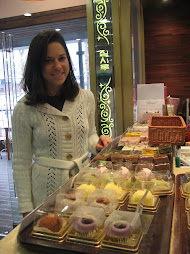
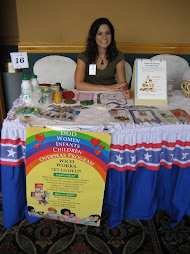
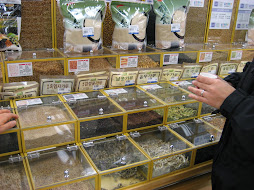
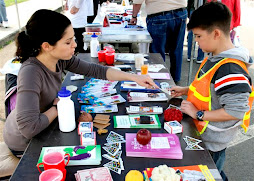
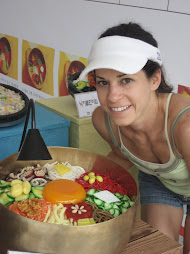
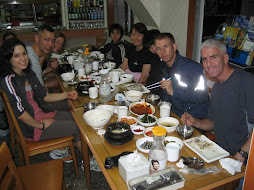
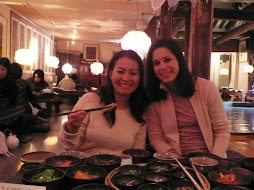
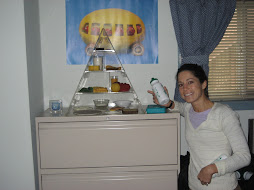
8 comments:
Don't forget the pumpkin candy I love to eat!!!!!
Don't you eat the candy in the picture I posted? I could have sworn it was your candy.
Wow! I'm so happy to hear that you are eating squash. I love it and never thought that you would eventually eat it also. There are many kinds and most are very tasty.
Oh yeah - I forgot the squash salad (kind of like potato salad) they have at Pizza Hut - yummy! Not sure what the ingredients are, but its definately worth trying and its chock full of nutrients (esp. beta carotene!).
Oh yeah - that is my pumpkin candy! I was reading and looking at the pix too fast last night - maybe I need some more Vitamin A for my eyesight :o)
Hello MandyKat,
I am glad that you are enjoying Korean food.
Korean word 'hobak' does include pumpkin and squash family :). It usually comes with little description in front of the word Hobak. 'Danhobak’ means kabocha; ‘Aaehobak’ is Korean zucchini, etc.
And you may have noticed by now, if you call a girl pumpkin in Korean, that girl may not be happy. Unlike English word pumpkin, 'hobak' means not so good looking.
KJ - Thank you for the explanation of the word 'hobak.' I did not know about the word's other meaning. I have heard, though, that Korean girls position themselves in the back of a photo. That way their faces look smaller.
I'm glad you are reading my blog!
Post a Comment